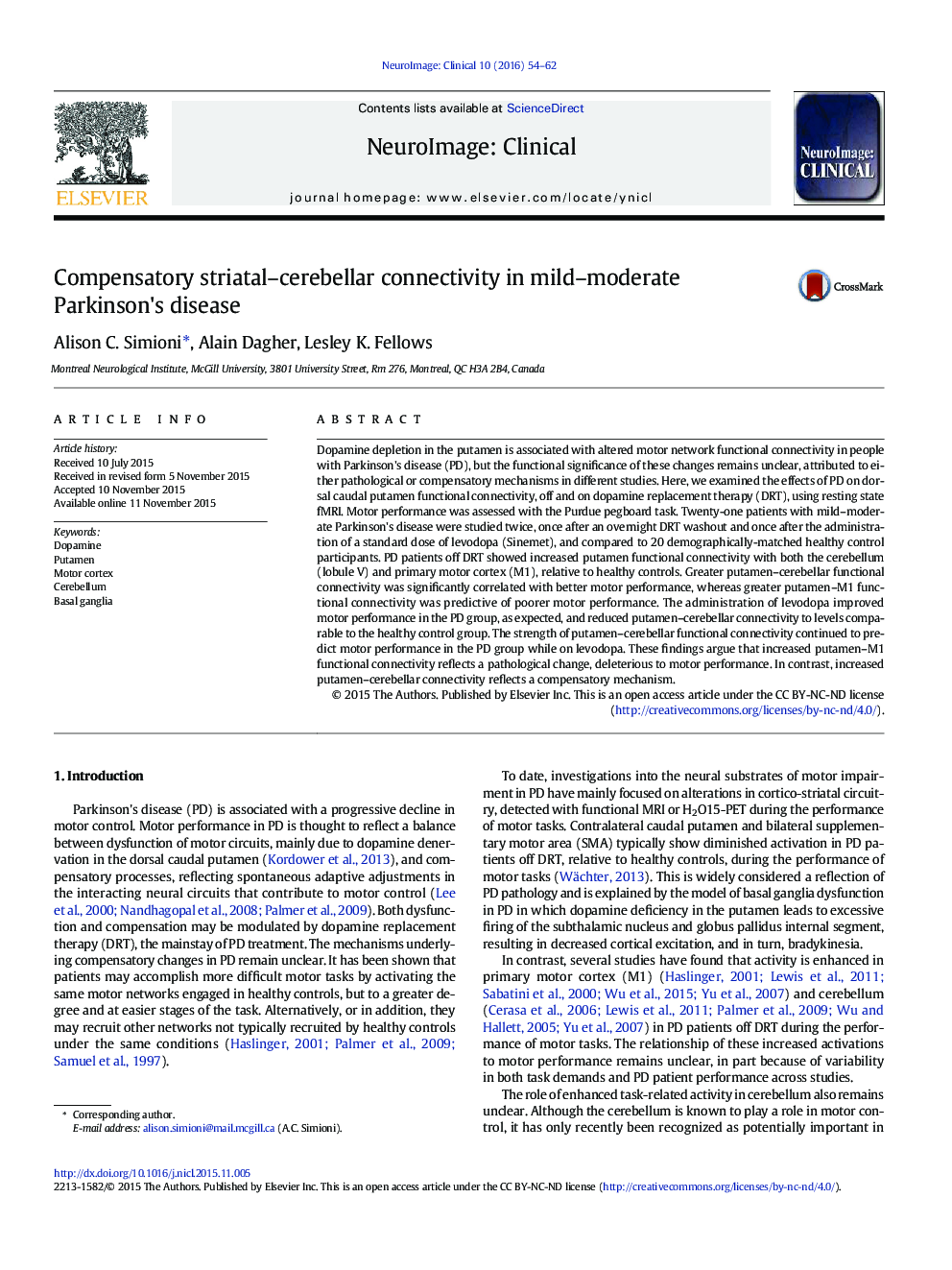| Article ID | Journal | Published Year | Pages | File Type |
|---|---|---|---|---|
| 3074857 | NeuroImage: Clinical | 2016 | 9 Pages |
•We examined the functional significance of altered motor networks in Parkinson's.•Patients showed greater putamen–cerebellar and –motor cortex connectivity.•Greater putamen–cerebellar connectivity correlated with better motor performance.•Greater putamen–motor cortex connectivity correlated with worse motor performance.•l-Dopa normalized putamen–cerebellar connectivity and improved motor performance.
Dopamine depletion in the putamen is associated with altered motor network functional connectivity in people with Parkinson's disease (PD), but the functional significance of these changes remains unclear, attributed to either pathological or compensatory mechanisms in different studies. Here, we examined the effects of PD on dorsal caudal putamen functional connectivity, off and on dopamine replacement therapy (DRT), using resting state fMRI. Motor performance was assessed with the Purdue pegboard task. Twenty-one patients with mild–moderate Parkinson's disease were studied twice, once after an overnight DRT washout and once after the administration of a standard dose of levodopa (Sinemet), and compared to 20 demographically-matched healthy control participants. PD patients off DRT showed increased putamen functional connectivity with both the cerebellum (lobule V) and primary motor cortex (M1), relative to healthy controls. Greater putamen–cerebellar functional connectivity was significantly correlated with better motor performance, whereas greater putamen–M1 functional connectivity was predictive of poorer motor performance. The administration of levodopa improved motor performance in the PD group, as expected, and reduced putamen–cerebellar connectivity to levels comparable to the healthy control group. The strength of putamen–cerebellar functional connectivity continued to predict motor performance in the PD group while on levodopa. These findings argue that increased putamen–M1 functional connectivity reflects a pathological change, deleterious to motor performance. In contrast, increased putamen–cerebellar connectivity reflects a compensatory mechanism.
